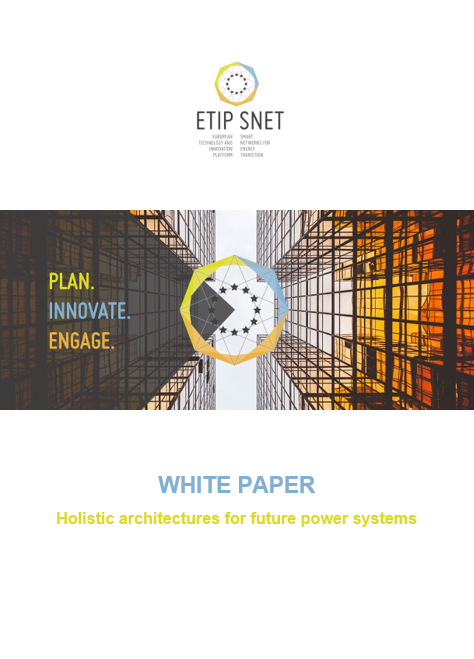
The ETIP SNET Working Group on Reliable, economic and efficient smart grid system (WG1) release White Paper on Holistic Architectures for Future Power Systems.
A cost effective and secure transition to lower carbon electricity system will require fundamental transformation of the power system control from a traditional centralised to a decentralised paradigm. This fundamental change will require development of novel architectures that can reliably meet the needs of the emerging power system. One of the key tasks associated with the new emerging architectures is to enhance the controllability associated with future power system operation in order to enhance the infrastructure utilisation while cost-effectively managing security and resilience. In this context, this White Paper sets out the holistic architecture vision that should inform future demonstration projects that would enable large-scale rollout of the new control paradigms.
A holistic power system architecture is an architecture in which all relevant components of the power system are merged into one single structure. These components could comprise of the following:
- Electricity producer (regardless of technology or size, e.g. big power plants, distributed generations, etc.),
- Electricity storage (regardless of technology or size, e.g. pumped power plants, batteries, etc.),
- Electricity grid (regardless of voltage level, e.g. high-, medium- and low voltage grid),
- Customer plants, and
- Electricity market
The holistic architecture unifies all interactions within the power system itself, between the network-, generation- and storage operators, consumers and prosumers, and the market, thus creating the possibility to harmonise them without compromising data privacy and cyber security. It facilitates all processes which are necessary for a reliable, economic and environmental friendly operation of smart power systems. It allows a clear description of the relationships between different actors. It creates conditions to go through the transition phase without causing problems.
Download the short version HERE
Download the full White Paper HERE
< Back to all entries
